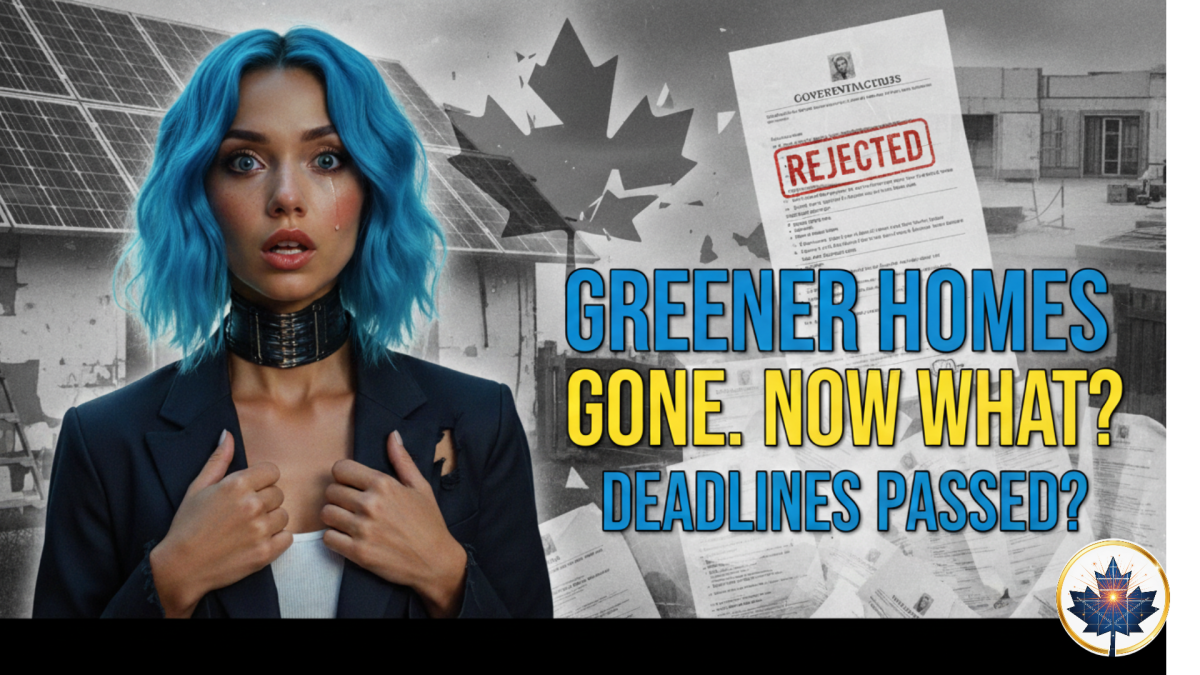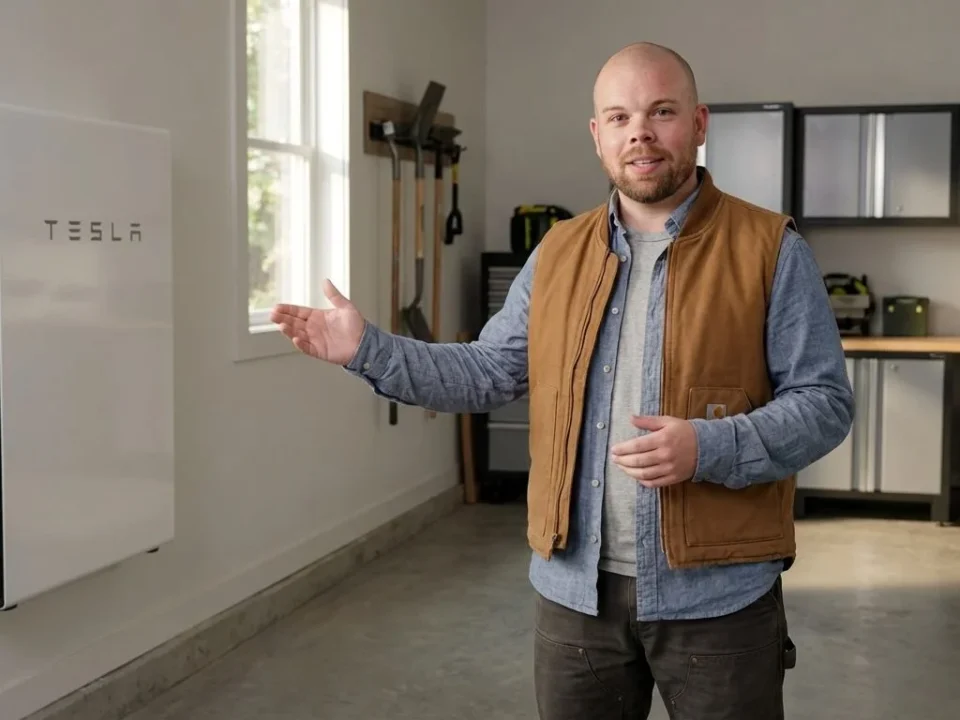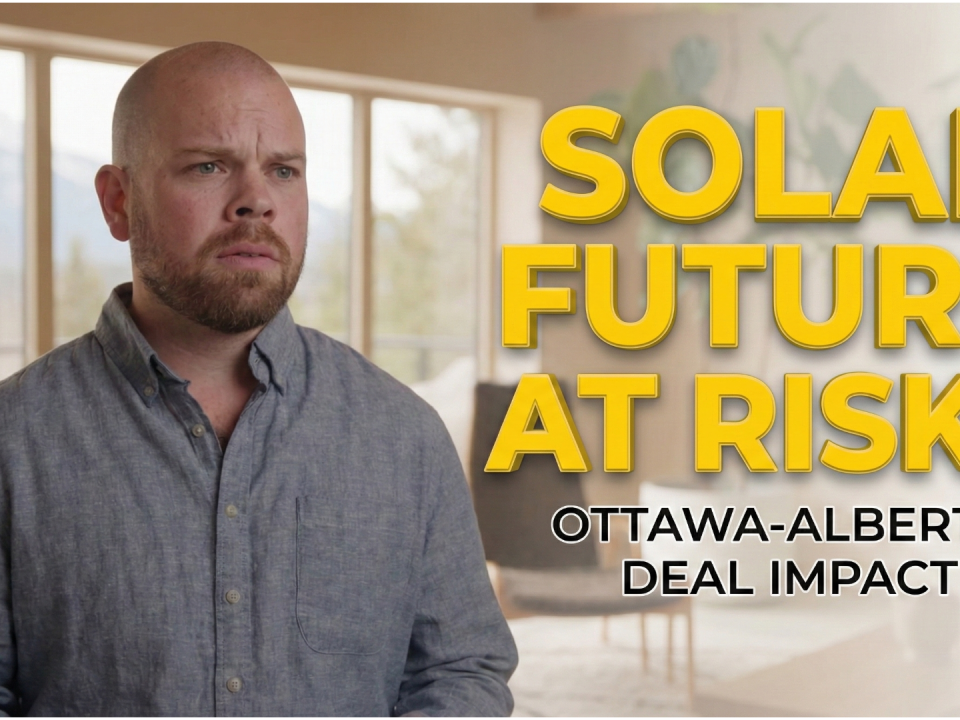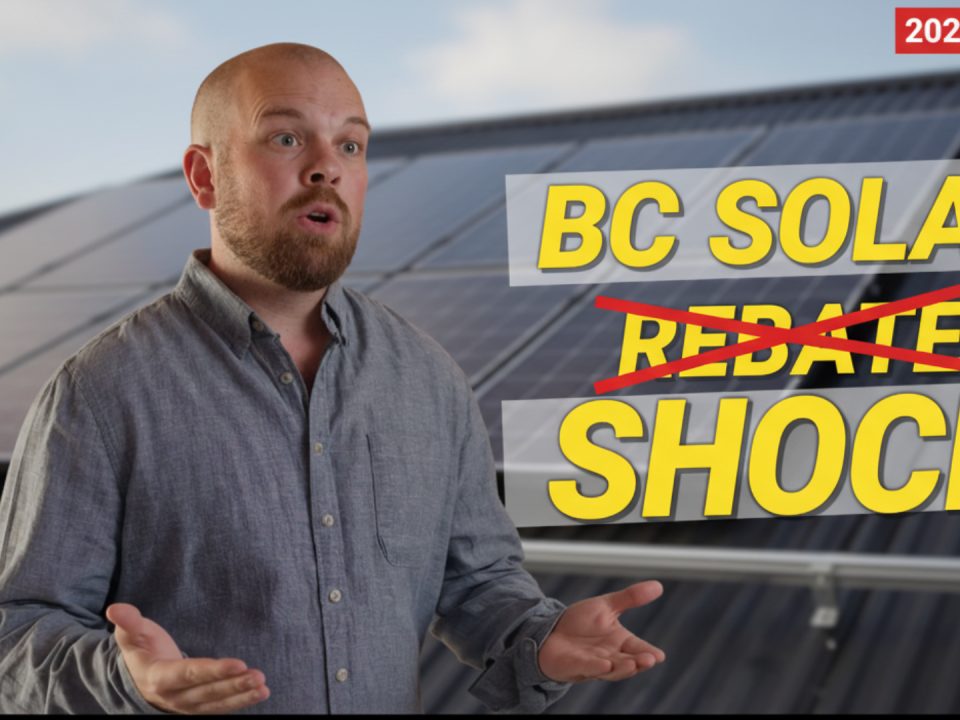
Solar Farms on Your Land: The End of Farming or a Billion-Dollar Lifeline?
September 25, 2025
How to Finance Your Solar Panels After Greener Homes Loan is Gone
September 29, 2025Let’s clear the air, because the communication around the Canada Greener Homes programs has been confusing. One minute you hear the grant is gone, the next you see information that suggests the loan is still active. The truth is, the landscape for federal home retrofit incentives has completely changed, and a lot of homeowners are feeling left in the dark.
As someone who guides homeowners through solar and energy retrofits every day, I can tell you this confusion is causing real frustration. So, let’s cut through the noise. Here’s the actual situation with both the Canada Greener Homes Grant and Loan, based directly on the facts and dates from Natural Resources Canada (NRCan).
The Bottom Line Up Front: Are the Programs Open or Closed?
Here is the most important takeaway, and it’s a tale of two different groups of people:
- For New Applicants: CLOSED. If you are just starting to think about a retrofit today, you cannot apply for the Canada Greener Homes Grant. The intake for new applications was shut down completely in February 2024. The Canada Greener Homes Loan portal will close permanently to all new applications after October 1, 2025.
- For Existing Applicants: OPEN (but with deadlines). If you successfully registered and have an application number from before the cutoff dates, the programs are still open for you. You are an “existing applicant” and can still complete your retrofits and claim your money, but you are on a strict timeline.
The rest of this article is broken down into two distinct paths. First, urgent information with hard deadlines for existing applicants. Second, a realistic guide for everyone else on what to do now.
What Actually Happened to the Canada Greener Homes Initiative?
To understand where we’re going, it helps to know how we got here. The Canada Greener Homes Initiative was a two-pronged approach to help Canadians make their homes more energy efficient.
What was the Purpose of the Grant and Loan?
The goal was to tackle the biggest barrier to a major home retrofit: the upfront cost.
- The Canada Greener Homes Grant: This was a rebate. It offered up to $5,000 to reimburse homeowners for a portion of the cost of eligible retrofits, plus up to $600 for the mandatory pre- and post-retrofit EnerGuide evaluations.
- The Canada Greener Homes Loan: This was the financing tool. It offered interest-free loans from $5,000 to $40,000 with a 10-year repayment term. This made big-ticket items like a new heat pump, a full insulation overall, or a complete solar system for your home achievable for many families.
You could even stack them—use the 0% loan to finance the project, then apply the $5,000 grant to pay down the loan balance immediately. It was a powerful combination.
Why did the Programs Close So Abruptly?
Simply put, they were victims of their own success. The demand from Canadians was enormous, far greater than the government had projected. The grant program, which was supposed to run until 2027, burned through its $2.6 billion budget and closed to new applicants in early 2024. The loan program saw a similar surge, committing over $2.9 billion to more than 120,000 households, forcing its closure as well.
While the government can frame this as a success, the “stop-and-start” nature of these programs creates huge problems. It disrupts the businesses of contractors and energy advisors and erodes the trust of homeowners who were planning projects based on these incentives. It’s a frustrating cycle that makes it hard for the industry to grow sustainably.
Path 1: For Existing Applicants – Your Critical Deadlines
If you have an application number, you made it in under the wire. But you cannot afford to delay. You have firm deadlines to meet. Missing them means you will not get your money.
| Program | Action Required | CRITICAL DEADLINE | Official Source |
| Canada Greener Homes Grant | Complete all retrofits, have post-retrofit evaluation done, and submit final request for payment. | December 31, 2025, at 11:59 p.m. (ET) | NRCan |
| Canada Greener Homes Loan | Submit your complete loan application through the portal. | October 1, 2025 | NRCan, CMHC |
Important Details for Existing Applicants
- For Grant Applicants: The process takes time. Your energy advisor needs to submit their final report, and then you need to upload all your invoices. Do not wait until the last week of December 2025 to book your final evaluation.
- For Loan Applicants: The October 1, 2025, deadline is just to submit your application. It is not a guarantee of funding. Applications are processed in the order they are received until the remaining funds are gone. If you apply close to the deadline, there is a real risk the money will already be fully committed.
Tip for All Existing Applicants: Your NRCan online portal is your single source of truth. All official communications and your specific deadlines are posted there. Do not rely on word of mouth; check your portal regularly and act well before the final cutoff dates.
Path 2: For Everyone Else – The Landscape Has Changed
With the broad-based grant and loan gone for new applicants, the federal strategy has shifted. Here’s what the new path forward looks like.
The New Federal Direction: The Canada Greener Homes Affordability Program
The government’s new flagship initiative is the Canada Greener Homes Affordability Program (CGHAP). Announced in Budget 2024 with $800 million in funding over five years starting in 2025-26, this program is a complete departure from the old model.
- It’s for low- to median-income households. This is a targeted program, not a universal one. Eligibility is based on household income.
- It offers no-cost, direct-install retrofits. Instead of giving you money to manage a project, approved organizations will handle the entire process for you—from the assessment to hiring contractors and installing upgrades like heat pumps and insulation, all at no cost to the participant.
- It includes renters. For the first time, tenants who pay their own utility bills can benefit from these upgrades, not just homeowners.
- It’s delivered by the provinces. The program is rolling out through partnerships with provinces and territories. The first agreement was launched in Manitoba on September 12, 2025, delivered by Efficiency Manitoba. It is expected to become available in other provinces over the next year.
This is a significant policy shift. The government is moving away from incentivizing the market broadly and is now directly intervening to address energy poverty for the nearly 2 million Canadian households that experience it.
The “Middle-Income Gap”: What’s Left for Most People?
This new direction, while important, creates a major policy vacuum. The Greener Homes Loan was heavily used by middle-income families—people who don’t qualify for low-income programs but also can’t easily write a cheque for a $30,000 retrofit.
With both the grant and loan gone, there is currently no dedicated federal program for this large group of Canadians. This is a serious issue that risks slowing down the overall pace of retrofits needed to meet Canada’s climate goals.
Your New Toolkit: Provincial and Municipal Programs
For most homeowners starting today, the primary source of funding has shifted. You now need to look closer to home.
- Provincial Programs: This is your new starting point. Many provinces have their own excellent rebate programs. You can find detailed guides for solar incentives in(https://solarenergies.ca/solar-panels-bc-guide/), Alberta, Ontario, and Quebec, among others.
- Municipal Programs: Don’t forget to check your city’s website. Some municipalities offer top-up grants or innovative financing. For example, cities like Toronto and Edmonton have Home Energy Loan Programs (HELP) or Clean Energy Improvement Programs (CEIP) that provide low-interest financing paid back through your property tax bill.
- Utility Companies: Your local hydro or gas provider may also offer rebates for specific upgrades like smart thermostats or heat pumps.
The strategy is no longer about one big federal program; it’s about researching and stacking smaller incentives from different sources.
How to Move Forward with a Major Retrofit (Like Solar)
So, the easy federal money is gone for most of us. Does that mean a big project like installing solar panels is out of reach? Absolutely not. It just means you need to be more strategic.
Is an Energy Advisor Still Worth It?
Yes, 100%. Even without a federal grant to chase, getting a pre-retrofit EnerGuide evaluation is the smartest money you can spend. An energy advisor is an independent expert who gives you a data-driven plan for your home. They’ll show you where you’re losing the most energy so you can fix the biggest problems first. Many provincial and municipal rebate programs still require an EnerGuide evaluation to qualify.
I had a client in Calgary who was determined to get solar panels to offset his huge electricity bills. His EnerGuide evaluation showed that his attic insulation was practically non-existent. For about $4,000, he got the attic properly air-sealed and insulated. His heating and cooling costs dropped by nearly 30% that first winter. He still went ahead with solar, but because his home was now so much more efficient, he needed a smaller, less expensive system. The advisor’s report saved him thousands and helped him tackle his energy problems in the right order.
Financing Solar Without the Federal Loan
The loss of the 0% interest loan is a significant blow, there’s no denying it. But the financial case for solar remains incredibly strong. Many people still hold onto common solar panel myths, but the reality is that the technology is more affordable and efficient than ever.
- The Investment Case: Solar is not just an expense; it’s an investment that can eliminate a recurring bill and protect you from endlessly rising electricity rates. It gives you control over your energy costs for the next 25+ years.
- Financing Options: The 0% loan was great, but it’s not the only option.
- HELOCs: A Home Equity Line of Credit often has a competitive interest rate and is a popular choice.
- Green Loans: Many banks and credit unions now offer specific “green” loans or financing packages for energy efficiency projects.
- Installer Financing: Most reputable solar companies have partnerships with financial institutions to offer competitive financing. Often, the monthly loan payment is designed to be equal to or less than your current average electricity bill, so you start saving from day one.
- Municipal PACE Loans: As mentioned, programs like the Clean Energy Improvement Program (CEIP) in Alberta are a fantastic option, allowing you to finance the project with a low interest rate and pay it back on your property tax bill over a long term (up to 20 years).
The key takeaway is this: the era of broad, easy-to-access federal money for home retrofits is over for now. The path forward requires more research into provincial and local programs and a clear-eyed look at smart financing. The goal of an energy-efficient, money-saving home is still absolutely achievable—the route to get there has just changed.




